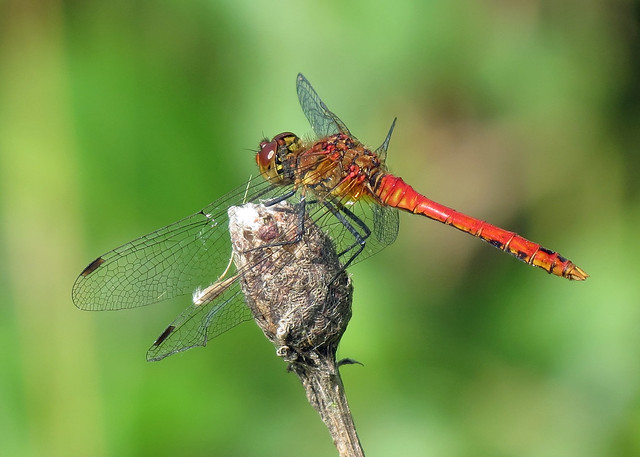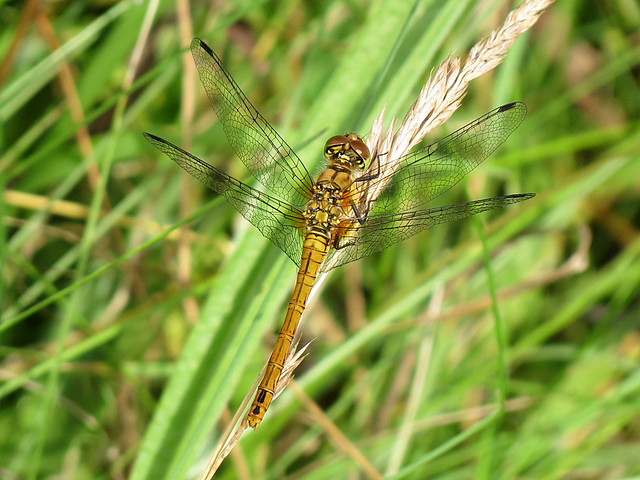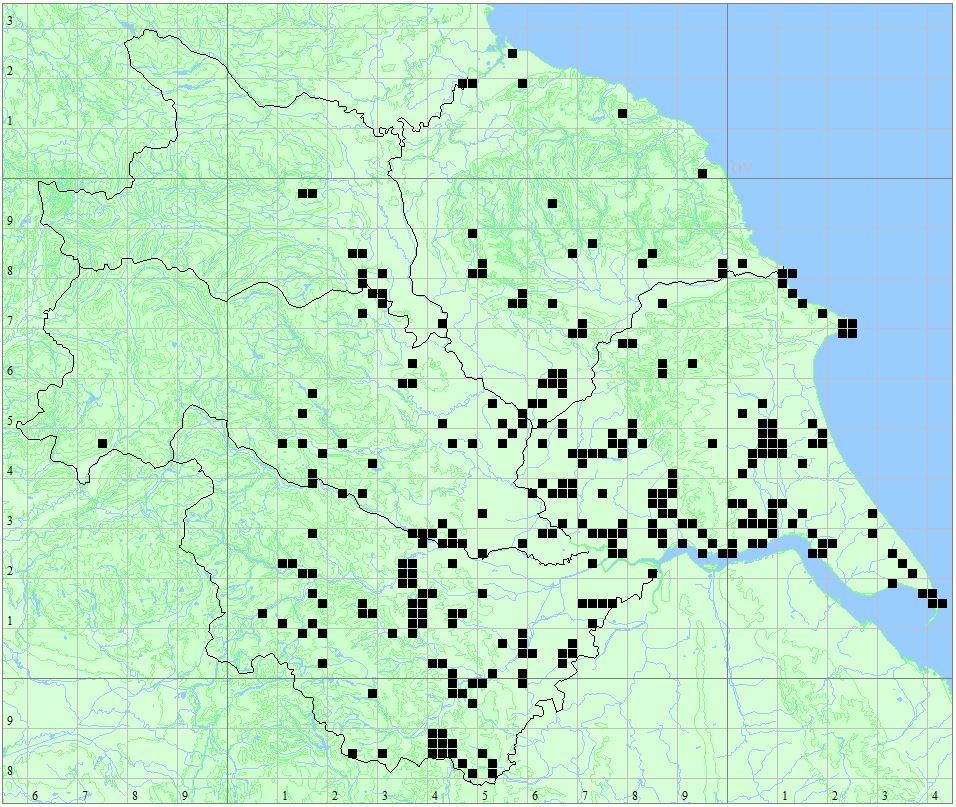<-Previous Species – Next Species->
Length
34mm, Wings 55mm.
Males

Thorax brown with 2 thin black lines on sides; abdomen narrow waist, rich red colour; face red; legs all black; line over frons spreads down the sides.
Females

Yellowish throughout with black markings on sides of thorax and abdomen; legs all black.
Habitat
Marshes, ponds, lakes, canals and ditches, with plenty of tall emergent vegetation. Will tolerate brackish conditions, using woodland near to water bodies for shelter.
Behavior
Males are less aggressively territorial than Common Darter Sympetrum striolatum. They have a ‘skippy’ flight, being less direct than the latter species. Copulation lasts only a few minutes whilst perched on vegetation or the ground. The female will then oviposit either alone, or in tandem, amongst shaded vegetation. Larvae live among submerged plants and emerge after one year.
Flight Period
Distribution Map
Locations
- Rodley Nature Reserve
- Thorne Moors – Humberhead Peatlands NNR
- Thorpe Marsh
- Oakhill & Goole Brick Ponds
- Paull Holme Strays
- Treeton Dyke
- Rabbit Ings
- Walton Colliery Nature Park
- Pugneys Country Park
- The Yorkshire Arboretum
- Nosterfield Local Nature Reserve
- Johnny Brown’s Common
- Potteric Carr
- Spurn Point
- Skipwith Common
- Saltmarshe Delph
- Pulfin and High Eske Nature Reserve
- Pocklington Canal
- Oak Road Lake, Hull
- North Cave Wetlands
- Leven Canal
- Hornsea Mere
- Filey Dams
- Eastrington Ponds
- Broomfleet Washlands
- Noddle Hill Nature Reserve
- Allerthorpe Common
- Tophill Low Nature Reserve
